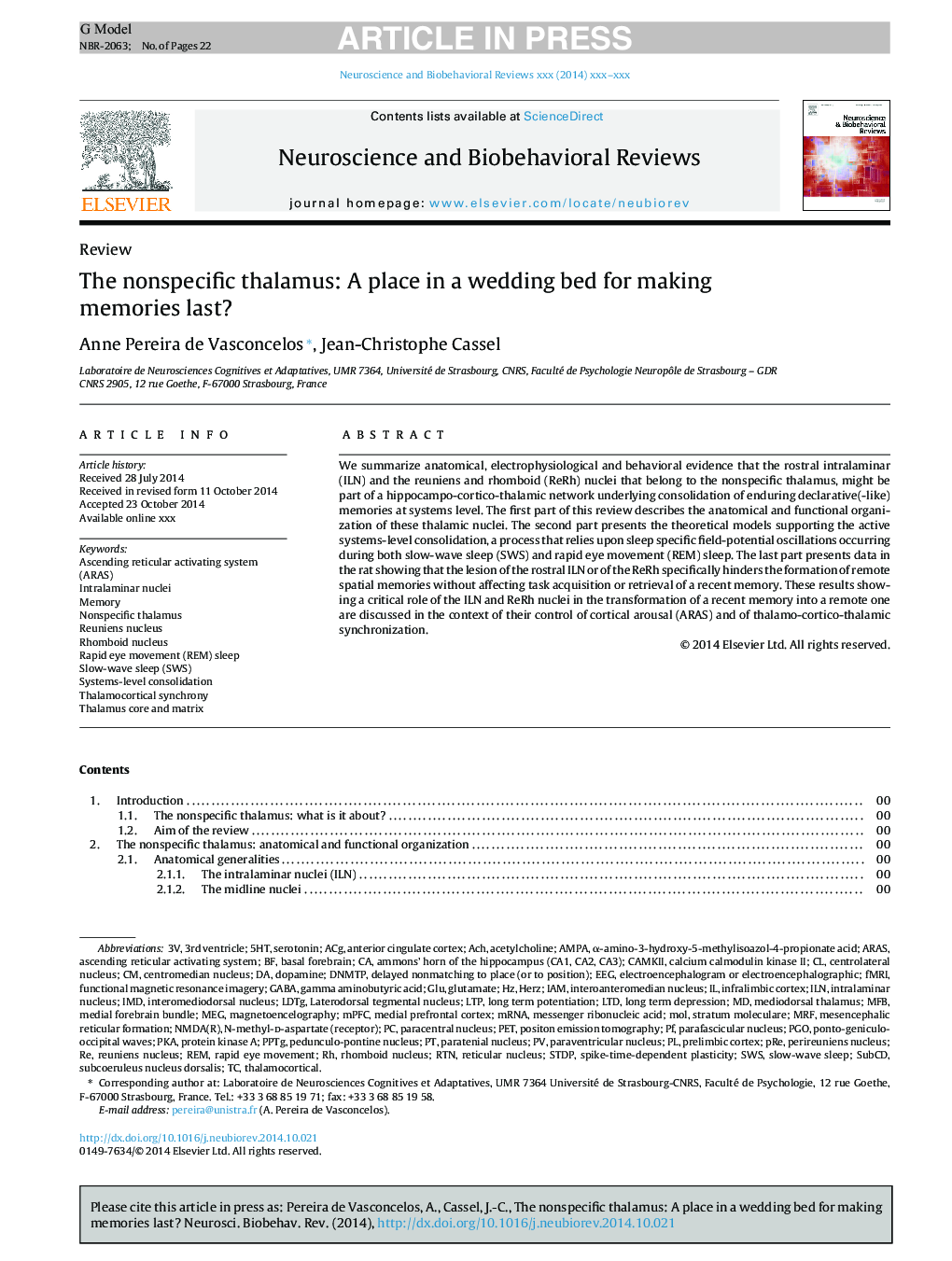| Article ID | Journal | Published Year | Pages | File Type |
|---|---|---|---|---|
| 7303468 | Neuroscience & Biobehavioral Reviews | 2015 | 22 Pages |
Abstract
We summarize anatomical, electrophysiological and behavioral evidence that the rostral intralaminar (ILN) and the reuniens and rhomboid (ReRh) nuclei that belong to the nonspecific thalamus, might be part of a hippocampo-cortico-thalamic network underlying consolidation of enduring declarative(-like) memories at systems level. The first part of this review describes the anatomical and functional organization of these thalamic nuclei. The second part presents the theoretical models supporting the active systems-level consolidation, a process that relies upon sleep specific field-potential oscillations occurring during both slow-wave sleep (SWS) and rapid eye movement (REM) sleep. The last part presents data in the rat showing that the lesion of the rostral ILN or of the ReRh specifically hinders the formation of remote spatial memories without affecting task acquisition or retrieval of a recent memory. These results showing a critical role of the ILN and ReRh nuclei in the transformation of a recent memory into a remote one are discussed in the context of their control of cortical arousal (ARAS) and of thalamo-cortico-thalamic synchronization.
Keywords
ILn5HTREMSTDPDNMTPMFBPPTgSWSRTNaCgIMDLDTgintralaminar nucleusthalamocorticalstratum molecularePGOSlow-wave sleep (SWS)Reuniens nucleusPositon emission tomographycentrolateral nucleuscalcium calmodulin kinase IIponto-geniculo-occipital wavesMPFCMRFmRNApKaCaMKIIAMPAAChARASAcetylcholineGamma aminobutyric acidlong term depressionmedial forebrain bundle3rd ventricleMEGmediodorsal thalamusmesencephalic reticular formationfMRIlong term potentiationLTPMemoryrapid eye movementRapid eye movement (REM) sleepslow-wave sleepDopaminemessenger ribonucleic acidSerotoninascending reticular activating systempreinfralimbic cortexanterior cingulate cortexmedial prefrontal cortexprelimbic cortexLTDIAMMolEEGReticular nucleusRhomboid nucleusCentromedian nucleusintralaminar nucleiparafascicular nucleusparacentral nucleusparaventricular nucleuslaterodorsal tegmental nucleusPETprotein kinase Abasal forebrainGABAGluglutamate
Related Topics
Life Sciences
Neuroscience
Behavioral Neuroscience
Authors
Anne Pereira de Vasconcelos, Jean-Christophe Cassel,
